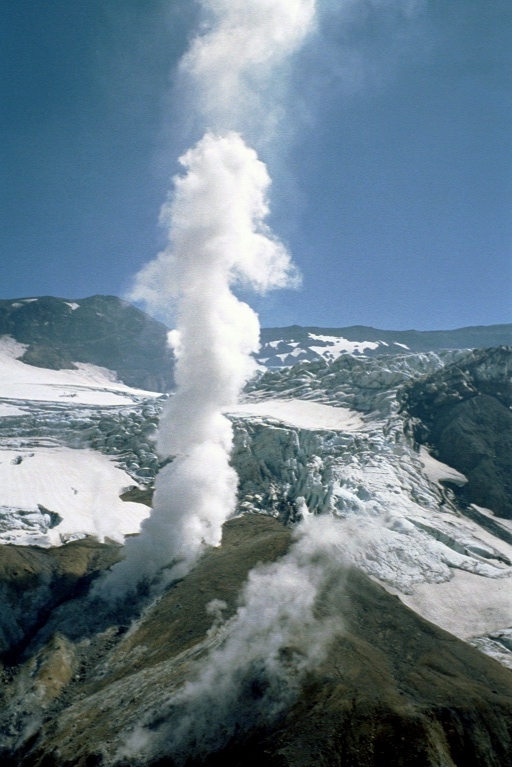
Situated at the northern arm of the Pacific "ring of fire" Kamchatka percolates with geothermal activity. Several dozen of the more than 200 volcanoes chaining the peninsula have erupted in this century. Hot springs dot the landscape.
The Kamchatka volcanoes are in a class of their own. They are conical and elegant, rising from the flat coastal lands and the labyrinth of ridges inland. The Russians don't call them mountains; they refer to them by a special term - sopka ("cone") - unique to these volcanoes.
Crossing the geothermal active areas is potentially dangerous. Hot pots, superheated earth, geysers and sulfuric pools are nothing to mess around with. Serious burns can result from a step too close to a steam vent, and enticing pools may have dangerous concentration of minerals. Most of trekkers have no experience with things like this in the mountains, so it pays to be extra cautious.
The valley of Death is only a small area in Kronotsky National Park, but a big cemetery of animals. The direct cause of the animals' death is a deadly concentration of such gases as hydrogen sulfide, carbonic acid and others accumulating in the lower zones in the unwindy weather. The profusion of dead insects attract small birds, the birds of prey gather together at the corpses of dead birds, big mammals come over, i.e. foxes, gluttons, bears - some of them are also caught by sudden death. There are certain periods (thawing in spring, for instance) when the Valley can be dangerous for people, too. The carcasses of dead animals are preserved in the Valley of Death for a long time, because the activity of oxidizing bacteria is suppressed here.
The nice effect of trekking through the geothermal active fields is the possibility for taking bath in the hot spring or in a warm river after a long and strenuous walking day.
